
Issue #: 185
Published: September / October 2022
- Price per issue - digital : 6.20€Digital magazine
- Price per issue - print : 10.90€Print magazine
- Access to Multihulls World digital archives Digital archives
Whether its wintering, a long stopover or you’re putting your boat up for sale, these are all excellent reasons to store your canvas away in the right place... until the time comes to set sail again: that’s what a multihull is made for, of course! But there’s a few precautions to be taken when reinstalling lines, blocks, tensioners, and other accessories you might use when it comes to bending on your sails. It would be a shame to damage a sail just before using it – here are our 28 tips!
The sails are the “main engines” of our multihulls, which is why it is essential to maintain them properly. To do this, there is nothing like removing the sails when the boat is immobilized for a long period. This is the time to wash them and get them off to the sailmaker for a service. This is the minimum that can be done because UV rays, humidity, flogging, chafe and salt can all quickly damage the seams. To avoid the risk of damage or tearing, the best thing is to check your sails annually. A typical revision will cost from € 100 to € 150 per sail. Tack and clew points, UV strip, gussets and batten pockets etc. are all checked. This is not a luxury, but the most elementary safety. And then you get your sails back in good condition before putting to sea again. The step we’re interested in today is to re-rigging, or bending the sails back on. You’ll also need to make a check of the running rigging, which you remembered to coil properly and secure off the deck to avoid exposing it to mildew. Halyards, sheets and other control lines can be put in a large bucket or tub with a fabric softener to desalinate them, and they can then be visually checked for any cuts or chafe. Checking all the relevant blocks and shackles is also necessary before refitting the sails. Too much wear and tear can lead to breakage of the part and cause major damage. The same goes for the lazy-bag, which should be sent to the sailmaker if you have spotted any premature wear. As there are mechanical parts involved (furlers, batten cars, sheet cars, etc.) a tool kit is a must, as well as a rigging kit if you have to do any splicing for example. Ideally you will have an extra pair of hands – all the operations are much easier when carried out by two people.
For our guide, we followed the refitting of the genoa, the mainsail and the lazy-bag aboard an Astrea 42. We would like to thank the technicians of Tendance Voile, Fountaine Pajot’s agent at Cogolin, in the South of France, who sequenced the steps for us, allow us to produce this article in picture form.
1 It’s time to go sailing, so we’re going to need to bend the sails back on. If your multihull was properly winterized, sheets and control lines will have been stored under cover and the halyards well coiled at the mast foot. The more orderly things are, the easier it will be to re-rig.
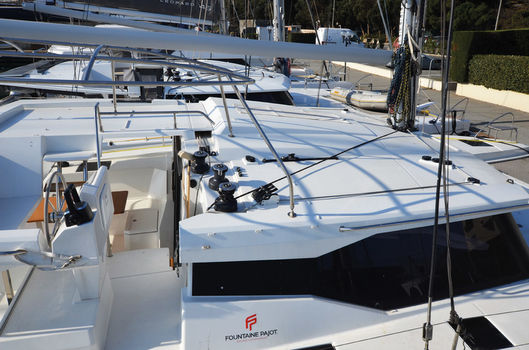
2 Sailing is still (somewhat) a mechanical sport - so you’ll need a few tools: pliers, Allen keys, bungee cords etc.
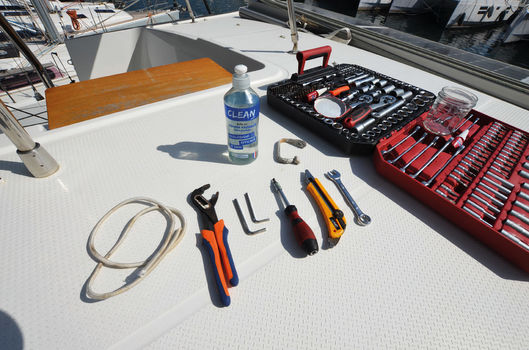
3 An initial visual check will reveal any problems. The level of wear on blocks and the parts of the furler should be carefully monitored. If a block is slightly seized, put it in some soapy water. But if any such part or shackle proves to be defective or too worn, it should be replaced.
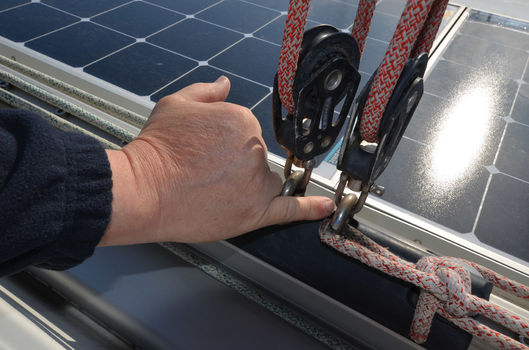 |
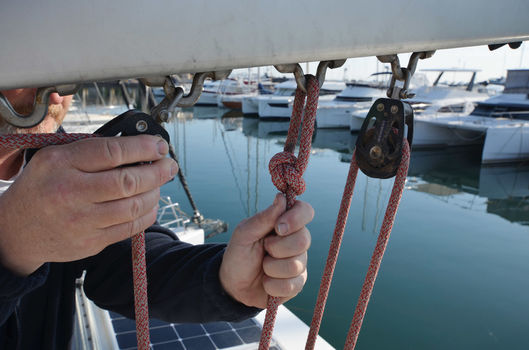 |
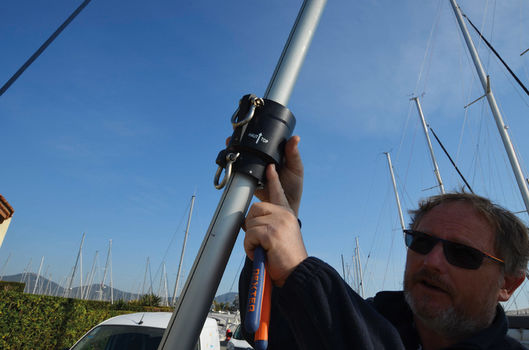
4 Start by securing the genoa halyard to the top swivel with a bowline. Next, fix the head of the genoa to the lower shackle of the swivel. Nipping it up with a wrench will lock it in ...
What readers think
Post a comment
No comments to show.